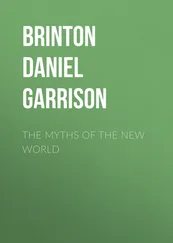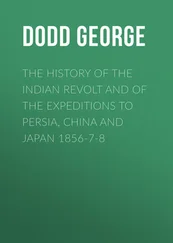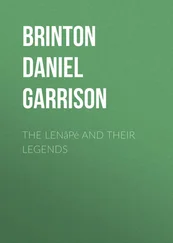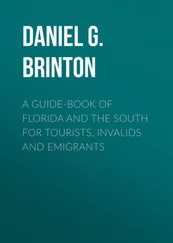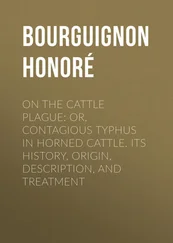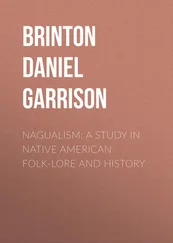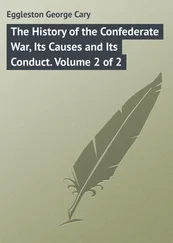Daniel Brinton - Notes on the Floridian Peninsula; its Literary History, Indian Tribes and Antiquities
Здесь есть возможность читать онлайн «Daniel Brinton - Notes on the Floridian Peninsula; its Literary History, Indian Tribes and Antiquities» — ознакомительный отрывок электронной книги совершенно бесплатно, а после прочтения отрывка купить полную версию. В некоторых случаях можно слушать аудио, скачать через торрент в формате fb2 и присутствует краткое содержание. Жанр: foreign_antique, История, История, foreign_edu, на английском языке. Описание произведения, (предисловие) а так же отзывы посетителей доступны на портале библиотеки ЛибКат.
- Название:Notes on the Floridian Peninsula; its Literary History, Indian Tribes and Antiquities
- Автор:
- Жанр:
- Год:неизвестен
- ISBN:нет данных
- Рейтинг книги:3 / 5. Голосов: 1
-
Избранное:Добавить в избранное
- Отзывы:
-
Ваша оценка:
- 60
- 1
- 2
- 3
- 4
- 5
Notes on the Floridian Peninsula; its Literary History, Indian Tribes and Antiquities: краткое содержание, описание и аннотация
Предлагаем к чтению аннотацию, описание, краткое содержание или предисловие (зависит от того, что написал сам автор книги «Notes on the Floridian Peninsula; its Literary History, Indian Tribes and Antiquities»). Если вы не нашли необходимую информацию о книге — напишите в комментариях, мы постараемся отыскать её.
Notes on the Floridian Peninsula; its Literary History, Indian Tribes and Antiquities — читать онлайн ознакомительный отрывок
Ниже представлен текст книги, разбитый по страницам. Система сохранения места последней прочитанной страницы, позволяет с удобством читать онлайн бесплатно книгу «Notes on the Floridian Peninsula; its Literary History, Indian Tribes and Antiquities», без необходимости каждый раз заново искать на чём Вы остановились. Поставьте закладку, и сможете в любой момент перейти на страницу, на которой закончили чтение.
Интервал:
Закладка:
Early in the next century there appeared an account of the Franciscan missionaries who had perished in their attempts to convert the savages of Florida. 51 51 Relacion de los Martires que ha avido en la Florida; 4to, (Madrid?) 1604.
The author, Geronimo de Ore, a native of Peru, and who had previously filled the post of Professor of Sacred Theology in Cusco, was, at the time of writing, commissary of Florida, and subsequently held a position in the Chilian Church, (deinde commissarius Floridæ, demum imperialis civitatis Chilensis regni antistes.) 52 52 Nicolas Antonio, Bibliotheca Hispana Nova, Tom. II., p. 43, and Compare “Garcilasso, Commentarios Reales, Parte II., lib. VII.”
He was a man of deep erudition, and wrote various other works “very learned and curious,” (mui doctos y curiosos. 53 53 Barcia, Ensayo Cronologico, p. 181.
)
Pursuing a chronological order, this brings us to the peculiarly interesting and valuable literature of the Floridian aboriginal tongues. Here, as in other parts of America, we owe their preservation mainly to the labors of missionaries.
As early as 1568, Padre Antonio Sedeño, who had been deputed to the province of Guale, now Amelia Island, between the mouths of the rivers St. Johns and St. Marys, drew up a grammar and catechism of the indigenous language. 54 54 “En breve tiempo hizó (Padre Antonio Sedeño) Arte para aprenderla, y Catecismo para enseñar la Doctrina Cristiana à los Indios.” Barcia, Ensayo Cronologico, p. 138. His labors have escaped the notice of Ludewig in his Literature of American Aboriginal Languages. Though they are the first labors, before him the French on the St. Lawrence had obtained lists of words in the native tongue which still remain, and Laudonniére, on the first voyage of Ribaut, (1562,) says of the Indians near the Savannah river, “cognoissans l’affection que j’avois de sçavoir leur langage, ils m’ invitoient après à leur demander quelque chose. Tellement que mettant par escrit les termes et locutions indiennes, je pouvois entendre la plus grande part de leur discours.” Hist. Notable de la Floride, p. 29. Unfortunately, however, he did not think these worthy of publication.
It was probably a scion of the Muskohge family, but as no philologist ever examined Sedeño’s work—indeed, it is uncertain whether it was ever published—we are unprepared to speak decisively on this point.
The only works known to be in existence are those of Franceso de Pareja. 55 55 Confessionario en Lengua Castellana y Timuquana. Impreso con licencia en Mexico, en la Emprenta de la viuda de Diego Lopez Daualos; Año de 1613, 12mo., 238 leaves. Nicolas Antonio says 1612, 8vo., but this is probably a mistake. Grammatica de la Lengua Timuquana, 8vo., Mexico, 1614; not mentioned by Ludewig. Catecismo y Examen para los que comulgan, 8vo., Mexico, 1614; reprinted “en la imprenta de Juan Ruyz,” 8vo., 1627.
He was a native of the village of Auñon, 56 56 Ludewig says Toledo; Torquemada calls him “Natural de Castro-Urdiales,” but Nicolas Antonio says expressly, “Franciscus de Pareja, Auñonensis (Toletanæ dioecesis Auñon oppidum est).” Bibliotheca Hispana Nova, Tom. I., p. 456. Besides this writer, see for particulars of the life of Pareja, Torquemada, Monarquia Indiana, Lib. XIX., cap. xx, p. 350, and Barcia, Ensayo Cronologico, pp. 167, 195, 203.
embraced the Franciscan theology, and was one of the twelve priests dispatched to Florida by the Royal Council of the Indies in 1592. He arrived there two years afterwards, devoted himself to converting the natives for a series of years, and about 1610 removed to the city of Mexico. Here he remained till the close of his life, in 1638, (January 25, 0. S.,) occupied in writing, publishing, and revising a grammar of the Timuquana language, prevalent around and to the north of St. Augustine, and devotional books for the use of the missionaries. They are several in number, but all of the utmost scarcity. I cannot learn of a single copy in the libraries of the United States, and even in Europe; Adelung, with all his extensive resources for consulting philological works, was obliged to depend altogether on the extracts of Hervas, who, in turn, confesses that he never saw but one, and that a minor production of Pareja. This is the more to be regretted, as any one in the slightest degree acquainted with American philology must be aware of the absolute dearth of all linguistic knowledge concerning the tribes among whom he resided. His grammar, therefore, is second to none in importance, and no more deserving labor could be pointed out than that of rendering it available for the purposes of modern research by a new edition.
A Doctrina Cristiana and a treatise on the administration of the Sacraments are said to have been written in the Tinqua language of Florida by Fray Gregorio Morrilla, and published “the first at Madrid, 1631, and afterwards reprinted at Mexico, 1635, and the second at Mexico, 1635.” 57 57 Ludewig, Literature of American Aboriginal Languages, p. 242.
What nation this was, or where they resided is uncertain.
The manuscript dictionary and catechism of the Englishman Andrew Vito, “en Lengua de Mariland en la Florida,” mentioned in Barcia’s edition of Pinelo, and included by Ludewig among the works on the Timuquana tongue, evidently belonged to a language far to the north of this, probably to one spoken by a branch of the Lenni Lennapes.
Throughout the seventeenth century notices of the colony are very rare. Travellers the most persistent never visited it. One only, Francesco (François) Coreal, a native of Carthagena in South America, who spent his life in wandering from place to place in the New World, seems to have recollected its existence. He was at St. Augustine in 1669, and devotes the second chapter of his travels to the province. 58 58 Voiages aux Indes Occidentales; traduits de l’Espagnol; Amsterdam, 1722. Dutch trans. the same year. Another edition under the title, Recueil de Voyages dans l’Amerique Meridionale, Paris, 1738, which Brunet does not notice.
It derives its value more from the lack of other accounts than from its own intrinsic merit. His geographical notions are not very clear at best, and they are hopelessly confounded by the interpolations of his ignorant editor. The authenticity of his production has been questioned, and even his own existence disputed, but no reasonable doubts of either can be entertained after a careful examination of his work.
Various attempts were made by the Spanish to obtain a more certain knowledge of the shores and islands of the Gulf of Mexico during this period. A record of those that took place between 1685 and 1693 59 59 Relacion de los Viages que los Españoles han hecho a las Costas del Seno Mexicano y la Florida desde el año de 1685 hasta el de 1693, con una nueva Descripcion de sus Costas.
is mentioned by Barcia, but whether it was ever published or not, does not appear.
About this time the Franciscan Juan Ferro Macuardo occupied the post of inspector (Visitador General) of the church in Florida under the direction of the bishop of Cuba. Apparently he found reason to be displeased with the conduct of certain of the clergy there, and with the general morality of the missions, and subsequently, in his memorial to the king, 60 60 Memorial en Derecho al Rei sobre la Visita à la Florida y otras Cosas, folio, Madrid, 1690.
handled without gloves these graceless members of the fraternity, telling truths unpleasant to a high degree. In consequence of these obnoxious passages, its sale was prohibited by the church on the ground that such revelations could result in no advantage. 61 61 “Solo sirven de dar Escandalo al Vulgar en los Excesos impatados à unos y otros Individuos,” Barcia, Ensayo Chronologico, p. 300.
Whether this command was carried out or not,—and it is said to have been evaded—the work is rare in the extreme, not being so much as mentioned by the most comprehensive bibliographers. Its value is doubtless considerable, as fixing the extent of the Spanish settlements, at this, about the most flourishing period of the colony. The Respuesta which it provoked from the pen of Francisco de Ayeta, is equally scarce.
Интервал:
Закладка:
Похожие книги на «Notes on the Floridian Peninsula; its Literary History, Indian Tribes and Antiquities»
Представляем Вашему вниманию похожие книги на «Notes on the Floridian Peninsula; its Literary History, Indian Tribes and Antiquities» списком для выбора. Мы отобрали схожую по названию и смыслу литературу в надежде предоставить читателям больше вариантов отыскать новые, интересные, ещё непрочитанные произведения.
Обсуждение, отзывы о книге «Notes on the Floridian Peninsula; its Literary History, Indian Tribes and Antiquities» и просто собственные мнения читателей. Оставьте ваши комментарии, напишите, что Вы думаете о произведении, его смысле или главных героях. Укажите что конкретно понравилось, а что нет, и почему Вы так считаете.

